Do you have a question about the Sony KV-28FX60U and is the answer not in the manual?
Description of the TV's input and output connectors, including Scart and audio jacks.
Table detailing features like Pal Comb, PIP, and Teletext availability per model.
Important safety information regarding mains lead, plug, and fuse replacement.
Details the pin numbers and their corresponding signal names for the 21-pin connector.
Explains the signal levels, impedance, and functions for each pin connection.
Explains error detection via LED flashes and IIC communication failures.
Lists diagnostic items, LED flashes, probable causes, and detected symptoms.
Provides a list of error codes and their corresponding LED error counts.
Describes error detection methods: IIC line, board checks, and individual device checks.
Explains how to access and interpret the Error Monitor Menu for saved and actual errors.
Details data sent to the service error reader for actual error code retrieval.
Lists error codes, their types (Gen.IIC, Board, Device), and associated functions.
Critical warning about short-circuiting the picture tube anode before removal.
Warning about using an isolating transformer due to live chassis for service.
Notes on critical components identified by shading and marks for safety.
Instructions for connecting the TV to mains, aerial, or external devices like VCRs.
Process for automatically tuning in available channels for immediate use.
Guide for manually tuning individual channels or input sources to specific positions.
Adjusting volume offset, fine-tuning, and AV output for specific channels.
Detailed settings for Picture Mode, Contrast, Brightness, Colour, Hue, Sharpness, and Noise Reduction.
Detailed settings for Equaliser Mode, Balance, Loudness, Space, and Dual Sound.
How to use PIP, switch it on/off, select sources, swap screens, and change PIP position.
Using the menu-guided teletext system for Top/Bottom/Full view, Text Clear, Reveal, and Time Page.
Steps for removing the rear cover and the chassis assembly.
Procedures for placing the TV in service mode and removing the U board.
Detailed steps for removing the picture tube and its anode cap.
Important notes on safely handling the anode cap to prevent damage.
Steps required before starting beam landing adjustment, including degaussing.
Adjusting the correction magnet for the Y-splitting axis.
Detailed steps for landing beam adjustment, including green pattern alignment.
Procedures for static convergence adjustment at the screen center.
Adjusting V.STAT magnet for red, green, blue dot convergence.
Using Hexapole magnet for horizontal and vertical mis-convergence correction.
Steps to adjust the focus control for optimal picture sharpness.
Procedures for G2 adjustment and white balance using service mode.
Detailed steps for adjusting white balance for optimal picture quality.
Table listing backend parameters with adjustable ranges and default values.
Instructions on how to access the TV's service mode using the remote commander.
Overview of the service menu structure and its main sections (Initialising, Monitoring, Reset Devices).
Detailed list of backend parameters with adjustable ranges and default values.
Adjustable parameters related to the TV's deflection system.
Adjustable parameters for fine-tuning dynamic convergence.
Extensive table detailing various 'Feature Low-End' parameters and their settings.
Continuation of 'Feature Low-End' settings, including PIP related options.
Parameters for special adjustments like RGB levels, EPG check, and audio settings.
General guide for adjusting the deflection system to obtain optimum image.
Comprehensive list of functions available in Test Mode 2, identified by numerical codes.
Reference to detailed schematic diagrams and printed wiring board layouts.
Description of the TV's input and output connectors, including Scart and audio jacks.
Table detailing features like Pal Comb, PIP, and Teletext availability per model.
Important safety information regarding mains lead, plug, and fuse replacement.
Details the pin numbers and their corresponding signal names for the 21-pin connector.
Explains the signal levels, impedance, and functions for each pin connection.
Explains error detection via LED flashes and IIC communication failures.
Lists diagnostic items, LED flashes, probable causes, and detected symptoms.
Provides a list of error codes and their corresponding LED error counts.
Describes error detection methods: IIC line, board checks, and individual device checks.
Explains how to access and interpret the Error Monitor Menu for saved and actual errors.
Details data sent to the service error reader for actual error code retrieval.
Lists error codes, their types (Gen.IIC, Board, Device), and associated functions.
Critical warning about short-circuiting the picture tube anode before removal.
Warning about using an isolating transformer due to live chassis for service.
Notes on critical components identified by shading and marks for safety.
Instructions for connecting the TV to mains, aerial, or external devices like VCRs.
Process for automatically tuning in available channels for immediate use.
Guide for manually tuning individual channels or input sources to specific positions.
Adjusting volume offset, fine-tuning, and AV output for specific channels.
Detailed settings for Picture Mode, Contrast, Brightness, Colour, Hue, Sharpness, and Noise Reduction.
Detailed settings for Equaliser Mode, Balance, Loudness, Space, and Dual Sound.
How to use PIP, switch it on/off, select sources, swap screens, and change PIP position.
Using the menu-guided teletext system for Top/Bottom/Full view, Text Clear, Reveal, and Time Page.
Steps for removing the rear cover and the chassis assembly.
Procedures for placing the TV in service mode and removing the U board.
Detailed steps for removing the picture tube and its anode cap.
Important notes on safely handling the anode cap to prevent damage.
Steps required before starting beam landing adjustment, including degaussing.
Adjusting the correction magnet for the Y-splitting axis.
Detailed steps for landing beam adjustment, including green pattern alignment.
Procedures for static convergence adjustment at the screen center.
Adjusting V.STAT magnet for red, green, blue dot convergence.
Using Hexapole magnet for horizontal and vertical mis-convergence correction.
Steps to adjust the focus control for optimal picture sharpness.
Procedures for G2 adjustment and white balance using service mode.
Detailed steps for adjusting white balance for optimal picture quality.
Table listing backend parameters with adjustable ranges and default values.
Instructions on how to access the TV's service mode using the remote commander.
Overview of the service menu structure and its main sections (Initialising, Monitoring, Reset Devices).
Detailed list of backend parameters with adjustable ranges and default values.
Adjustable parameters related to the TV's deflection system.
Adjustable parameters for fine-tuning dynamic convergence.
Extensive table detailing various 'Feature Low-End' parameters and their settings.
Continuation of 'Feature Low-End' settings, including PIP related options.
Parameters for special adjustments like RGB levels, EPG check, and audio settings.
General guide for adjusting the deflection system to obtain optimum image.
Comprehensive list of functions available in Test Mode 2, identified by numerical codes.
Reference to detailed schematic diagrams and printed wiring board layouts.
| Screen Size | 28 inches |
|---|---|
| Display Type | CRT |
| Aspect Ratio | 4:3 |
| Audio Output | 20 W |
| Tuner | Analog |
| Resolution | Standard Definition |
| Connectivity | SCART x 2, Composite Video, S-Video |
| TV Standard | PAL, SECAM |
| Features | Teletext |
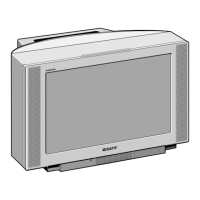


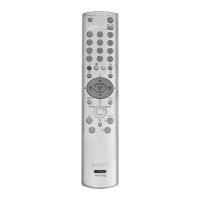
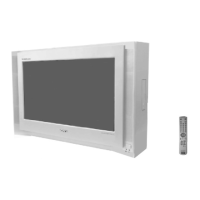


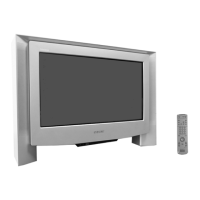
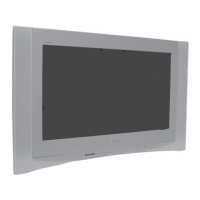


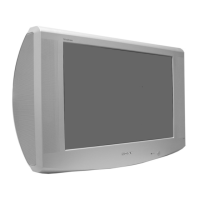
